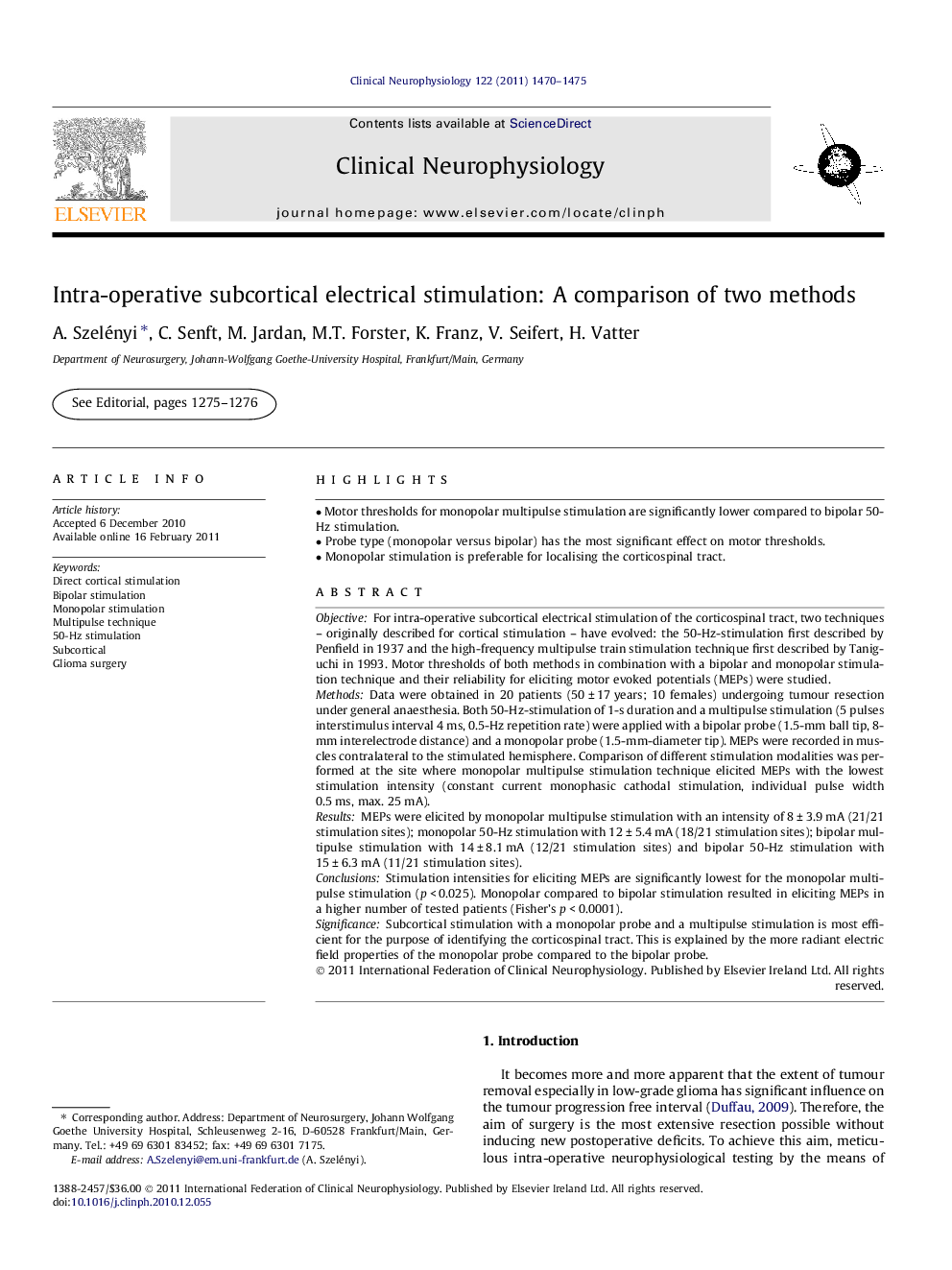| Article ID | Journal | Published Year | Pages | File Type |
|---|---|---|---|---|
| 3044794 | Clinical Neurophysiology | 2011 | 6 Pages |
ObjectiveFor intra-operative subcortical electrical stimulation of the corticospinal tract, two techniques – originally described for cortical stimulation – have evolved: the 50-Hz-stimulation first described by Penfield in 1937 and the high-frequency multipulse train stimulation technique first described by Taniguchi in 1993. Motor thresholds of both methods in combination with a bipolar and monopolar stimulation technique and their reliability for eliciting motor evoked potentials (MEPs) were studied.MethodsData were obtained in 20 patients (50 ± 17 years; 10 females) undergoing tumour resection under general anaesthesia. Both 50-Hz-stimulation of 1-s duration and a multipulse stimulation (5 pulses interstimulus interval 4 ms, 0.5-Hz repetition rate) were applied with a bipolar probe (1.5-mm ball tip, 8-mm interelectrode distance) and a monopolar probe (1.5-mm-diameter tip). MEPs were recorded in muscles contralateral to the stimulated hemisphere. Comparison of different stimulation modalities was performed at the site where monopolar multipulse stimulation technique elicited MEPs with the lowest stimulation intensity (constant current monophasic cathodal stimulation, individual pulse width 0.5 ms, max. 25 mA).ResultsMEPs were elicited by monopolar multipulse stimulation with an intensity of 8 ± 3.9 mA (21/21 stimulation sites); monopolar 50-Hz stimulation with 12 ± 5.4 mA (18/21 stimulation sites); bipolar multipulse stimulation with 14 ± 8.1 mA (12/21 stimulation sites) and bipolar 50-Hz stimulation with 15 ± 6.3 mA (11/21 stimulation sites).ConclusionsStimulation intensities for eliciting MEPs are significantly lowest for the monopolar multipulse stimulation (p < 0.025). Monopolar compared to bipolar stimulation resulted in eliciting MEPs in a higher number of tested patients (Fisher’s p < 0.0001).SignificanceSubcortical stimulation with a monopolar probe and a multipulse stimulation is most efficient for the purpose of identifying the corticospinal tract. This is explained by the more radiant electric field properties of the monopolar probe compared to the bipolar probe.
► Motor thresholds for monopolar multipulse stimulation are significantly lower compared to bipolar 50 Hz stimulation. ► Probe type (monopolar vs. bipolar) has the most significant effect on motor thresholds. ► Monopolar stimulation is preferable for localising the corticospinal tract.
